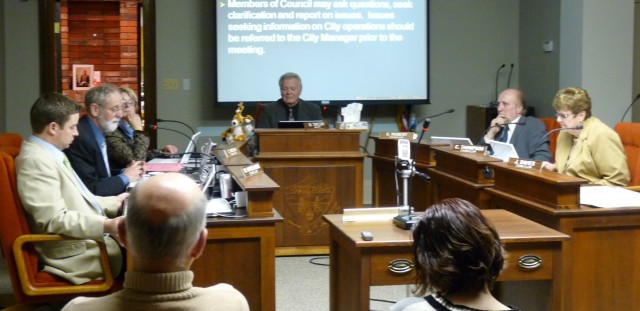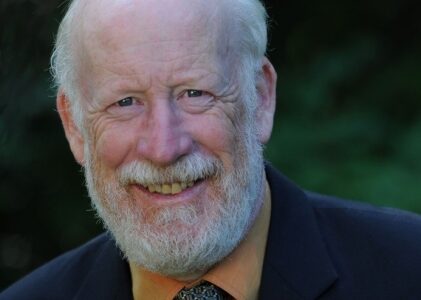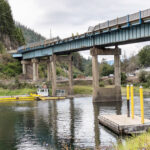SUMMING IT UP:Grand Forks city council
Presentations from three delegations topped the list at the regular meeting of Grand Forks City Council on Tuesday, Apr. 6, 2010.
Use of old Hardy View Lodge facility
Margaret Steele spoke about the feasibility study she conducted on the potential uses for the old Hardy View Lodge facility with the support of the public safety committee and other members of a working group. Several groups have approached the city to receive support for using the facility for transition housing, housing for people with disabilities, or as a shelter for the homeless over the past couple of years since the residents of the lodge moved into their new facility at the hospital. Steele was engaged to review the feasibility of the location as a homeless shelter.
Her report, however, concluded that the building was not suitable for a homeless shelter because of its size and location within the community. Steele said her conclusions were aided by a survey conducted to identify the extent of homelessness in the community. More than half of those surveyed through support agencies in Grand Forks did not have a place to stay. Grand Forks does not have any emergency shelters or outreach workers for homeless people at this time and limited social housing.
“We need a greater range of housing and supports in our community to break the cycle of homelessness. Most housing in our community is private ownership. In my opinion Hardy View Lodge is not suitable for an emergency shelter,” said Steele. “For one thing its too big – 36 rooms, and for another it is in the wrong location. Emergency shelters are usually closed during the day so people need to leave the premises after breakfast and return at dinner time. Emergency shelters need to be located in the downtown area so people can access other services and supports.”
Steele instead suggests that the facility is better suited to some type of transition or supported housing and would be potentially able to have up to three separate groups in the different wings of the building. The facility is under the B.C. Housing Management Commission and any use of the building would have to be approved by them under their mandate for subsidized housing.
Steele also recommended that the city should host a public forum to educate the community on the larger issue of homelessness in Grand Forks. This was supported by a motion from Councillor Gene Robert to partner with the public safety focus group to host a community forum to be arranged at a future date.
FortisBC PowerSense Programs
A delegation from FortisBC by Mark Warren, director of customer service, and Keith Veerman, manager of PowerSense programs, presented an update to the power sense demand side management program that helps customers manage their electricity bills through energy efficiency improvements. Since it began in 1989, the PowerSense program has helped customers save more than 360 million kilowatt hours — enough electricity to power about 27,700 homes each year.
Over the next few months, FortisBC will be completing a review of existing PowerSense programs and planning for new and enhanced programs for 2011. Examples of program options include residential heat pumps, commercial lighting, low income programs, as well as general energy efficiency education. For people with low or fixed incomes there is a kit that FortisBC gives out with a number of energy saving items that can be requested. Others can receive an audit that will identify areas in your home that need addressing and then homeowners can come to FortisBC for support through their program to make changes.
Airport committee of economic development task force
Ex-mayor Jake Raven presented the work of the airport committee of the economic development task force to council with hopes that the recommended action items will become a part of the council’s work in the future. Raven, one of the committee that includes Bill Gillespie, John Heavener, and Ron Wyers, spoke about the quality and potential of the airport. He provided a comparison with the airport in Vernon, particularly highlighting that while the Vernon airport is shorter and narrower, they are able to have three full-time employees and generate $29.6 million in direct economic impact on their community.
Raven said that old issues such as the clear zone bylaw required restricting heights of structure and trees outside of the airport perimeter and existing and future land registrations amendments reflecting the bylaw are only part of what is needed to develop the airport.
“That (the bylaw) is a federal thing. I have a meeting report here from the airport citizen advisory committee dated Jan. 24, 2002 and it was brought up in there. That committee was advised then that city staff were currently working on this. That was eight years ago. The information that we got is that this is still not in place,” said Raven.
The committee recommended that the airport sub-committee remain active, that council approve the hiring of a part-time airport manager, that the council fund $10,000 per annum for the advertising and promotion of the airport, and that council implement the airport site development plan that was created in 2002. The committee also made further recommendations regarding other areas of potential development including attracting pilot training schools, promoting the airport as an alternate to Castlegar, attracting skiers for Red Mountain, and upgrading the airport website.
Council received their report and moved to include the committee’s recommendations in the economic development plan for the city.
Overton Creek watershed
Local guide / outfitter Barry Brandow addressed council about the management of the Overton Creek watershed. The city has a water licence on the creek and, therefore, has some authority over the area. Brandow raised concerns that water testing conducted on the creek has shown spikes in e-coli when cows are present in the area. While city council does not currently draw water from this creek, it continues to hold the licence for future needs.
“I sent water samples to Caro, a certified lab, from Overton Creek in 2007 and Moody Creek in 2007 and 2009. Water samples came back positive for both total coliform and e-coli. Not surprising when the cow manure is in the creek,” said Brandow in his presentation. “Other water samples from Overton and Morrissey Creek watershed revealed an alarming spike in both total coliform and e-coli when cows present. Both Walkerton, Ontario 2000 and Salinas Valley 2006 are a reminder that high total coliform and e-coli counts can be a serious health risk – a fact that is discounted in the current water management of all sites important to the people of east Boundary.”
Brandow called on council to ban cattle from the city’s watershed. After some discussion, Councillor Christine Thompson moved that the city receive Brandow’s presentation and that the issue of banning cattle be brought forward to the next primary meeting of council on Apr. 19 for further discussion.
Provincial election task force review
A task force at the provincial level has been reviewing the legislation of civic elections in B.C. They are taking input on the subject from communities and local residents. Robert spoke to the task force’s consideration of allowing corporations a vote in municipal elections. As a result of the conversation a motion was passed by council to reflect that the City of Grand Forks opposes the introduction of the corporate vote in B.C. and that a letter be sent communicating their position to the task force.
Electrical utility costs rising
As a result of increases from FortisBC, the city gave first, second and third readings to a bylaw to increase electrical rates to users by 7.8 per cent, back dated to February to match the increases charged to the city. Final reading of the bylaw will take place Apr. 19.






















